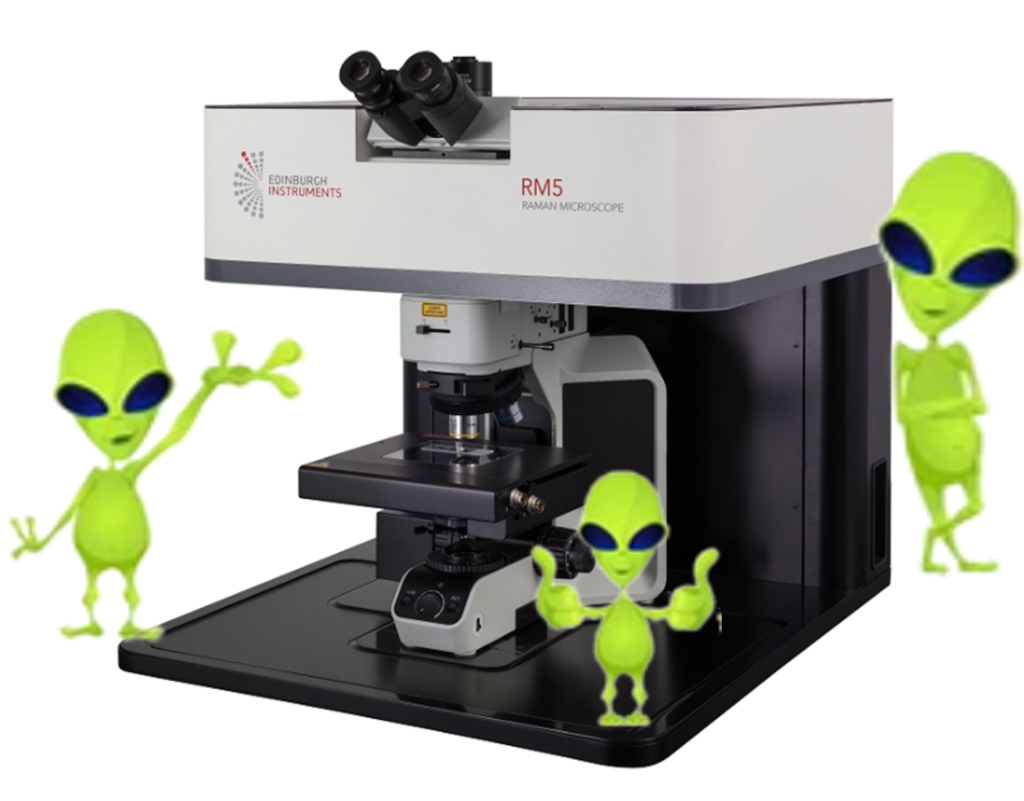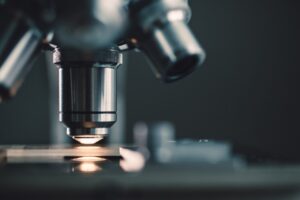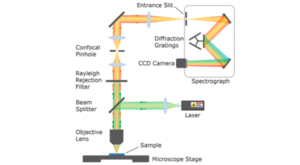How are Raman spectroscopy and aliens connected? In 2020 NASA launched the Mars rover Perseverance, after landing on the 18th of February 2021 Perseverance has been exploring the surface hunting for ancient microbial life. So, what does Raman spectroscopy have to do with this? Well currently on Mars, there is a Raman spectrometer! It’s the first UV Raman spectrometer to explore the red planet, and to celebrate world space week we want to tell you more about this interesting technique, and its use on Mars.

Figure 1: Perseverance searching for life on Mars
As the rover explores Mars, it will take samples of rocks and sediments for Raman analysis via its analyser SHERLOC. SHERLOC works in tandem with its camera right hand man WATSON to find pieces of evidence for analysis. The Raman spectra will then be used to select the samples most likely to show signs of microbial life. The ratio of hydrogen to carbon can be calculated from the spectra which is important as the more the rock has been altered (e.g., from heating or radiation) the less hydrogen it contains. The scientists at NASA are interested in older, more pristine samples, as these are more like their original composition and therefore offer more promise to contain traces of ancient life.
Why was Raman spectroscopy selected for this mission? The technique is non-destructive, meaning the samples are unchanged after analysis and ready for further investigations back on Earth. Raman spectroscopy provides chemical and structural information on samples, with the technique being particularly sensitive to crystal composition. It can also be used to evaluate different phases of samples with the same, or extremely similar, chemical composition. Have a read of our more detailed blog post on Raman spectroscopy to learn more about this interstellar technique.
Back on Earth, the samples selected by Raman on Mars will one day be analysed. Now, confocal Raman Microscopy can take the lead. On Mars, simple point and shoot type measurements will be being taken to evaluate the rock samples, on Earth we can couple the Raman spectrometer to a confocal microscope opening up even more detailed analysis.
Using a confocal microscope, we can now see intricate details of the sample via Raman mapping. Particles and crystals below 1 µm in size can be resolved and Raman spectra for the entire sample acquired. Inclusions within samples can be analysed with confocal Raman microscopy without the need expose them, these can be solid, liquid, or gaseous inclusions, keeping the original rock intact.
Whilst we don’t have any samples from Mars to show you, our Applications Team have investigated rocks from Earth to reveal their secrets. This can be important for research into the history of the world, ancient life, and the more modern problem of gemstone imitation.

Figure 2: Edinburgh Instruments RM5
An RM5 Raman Microscope was used to study a sample described as sodalite. Sodalite is strongly blue coloured tectosilicate mineral largely found in Canada and Greenland. When mining for any mineral there will typically be a mix of minerals and the processing of the sample will determine its purity and quality. In this example Raman mapping identified 3 constituents in the sample.

Figure 3: Top – reflected brightfield image from a sample of Sodalite, Middle – Raman image from sample, Bottom – Raman spectrum from the 3 constituents found by Raman imaging
The Raman map is shown in three colours to represent the three constituents that were identified. The green areas represent the sodalite that the gemstone the sample was labelled as. The pink/purple area is orthoclase which is a potassium feldspar material and represents one of the most abundant minerals on Earth. Finally, a small amount of the sample (top right of the Raman map), shown in red, was identified as nepheline. Find out more on gemstone analysis using Raman microscopy here.
Whether your samples are from Earth or even intergalactic if you want to know more about our range of confocal Raman microscopes, please get in touch with one of our sales team. We would be happy the help discover the best spectroscopic solution for your laboratory.

No results found.

